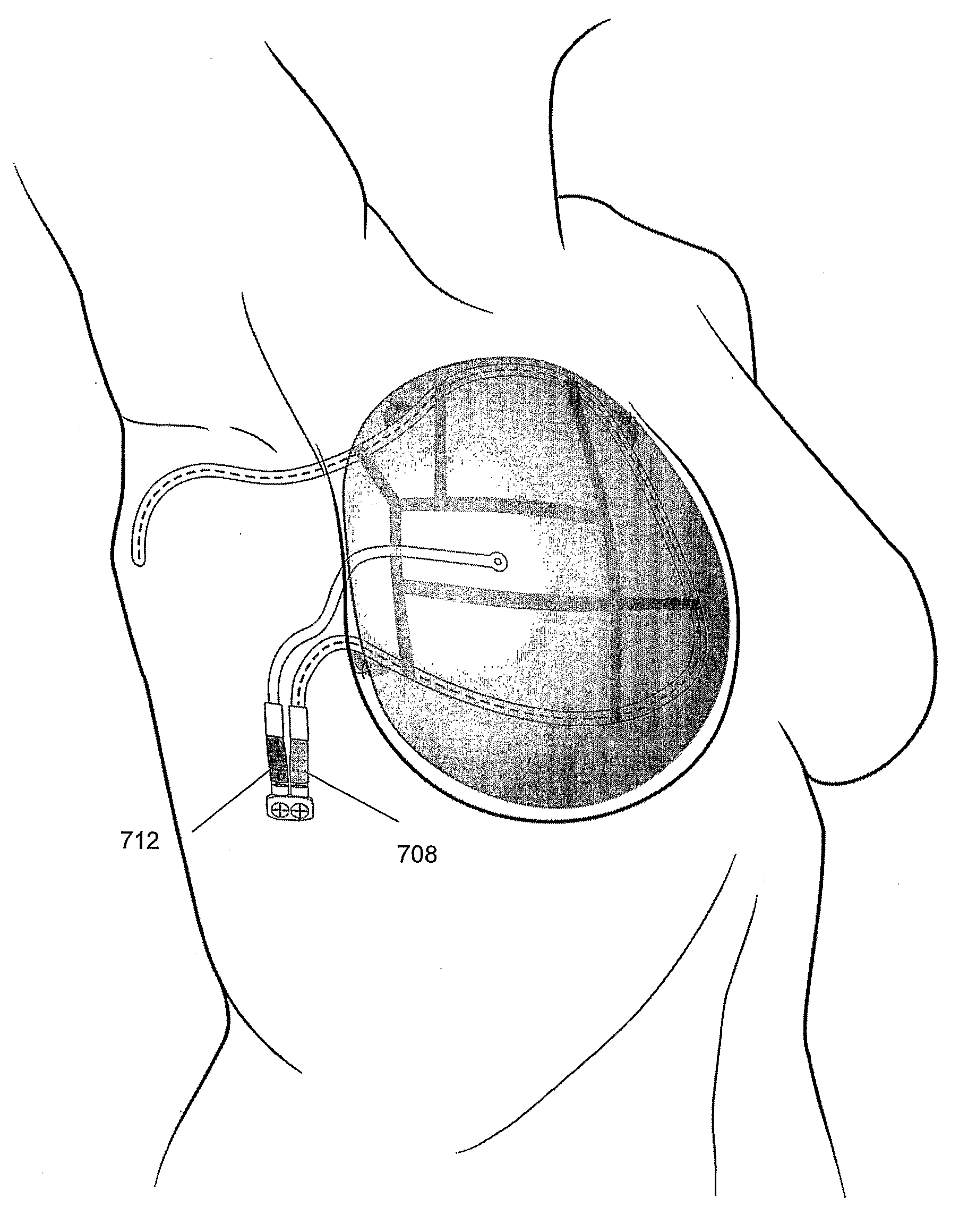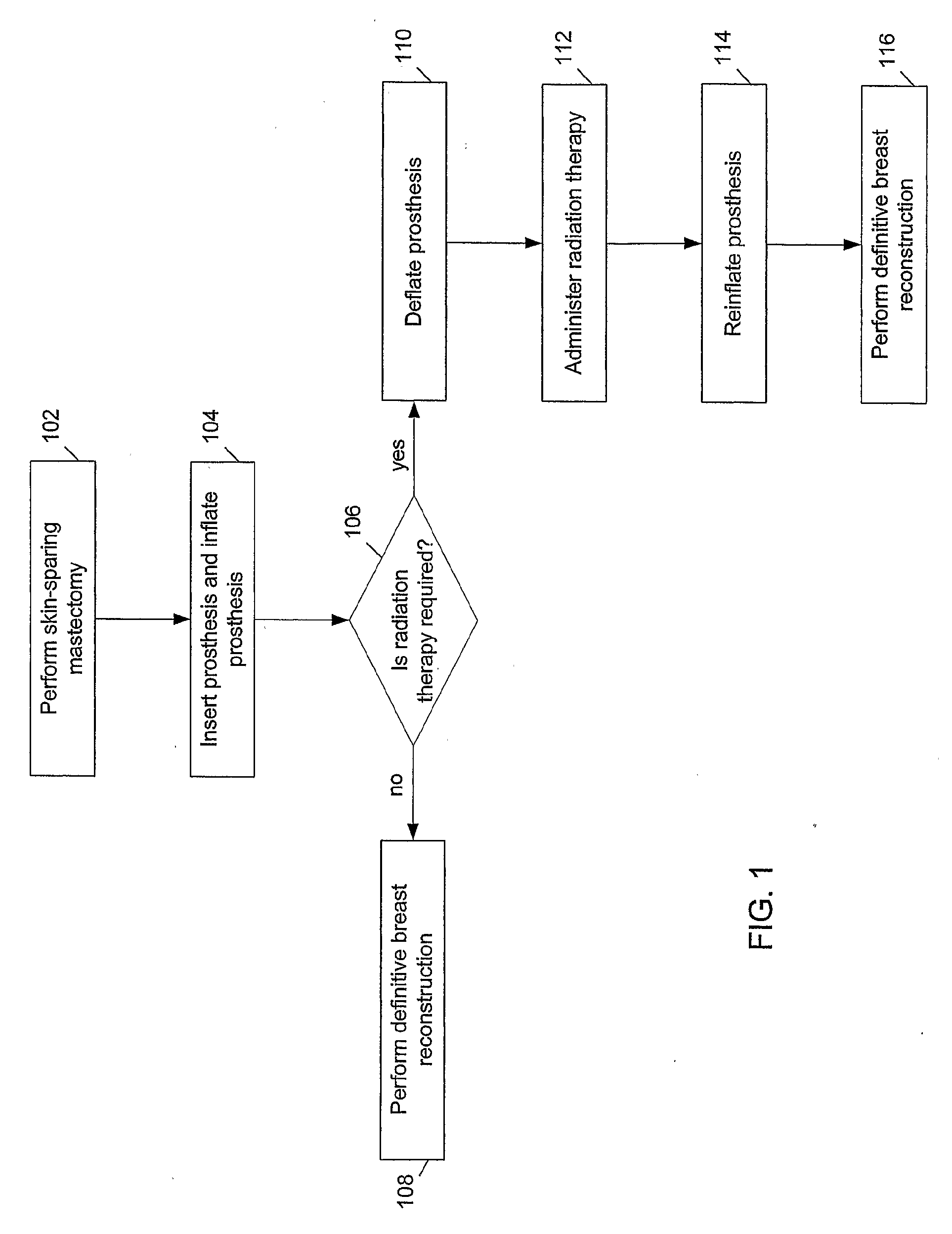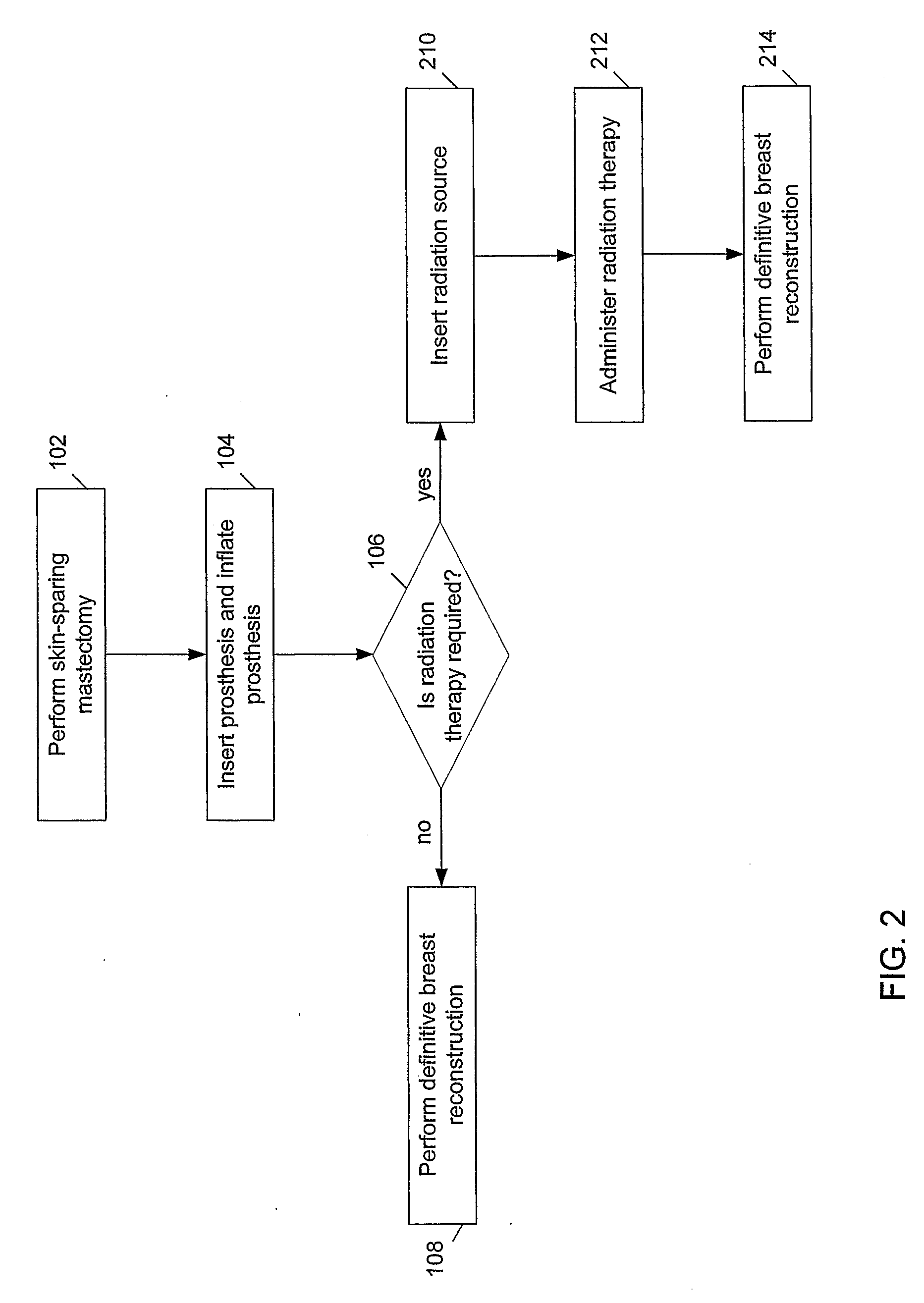Methods and Devices for Breast Reconstruction
a breast and breast technology, applied in the field of breast reconstruction, can solve the problems of increasing the risk of complications, increasing the chance of capsular contracture, and excluding the treatment of the internal mammary nodes and/or increasing the radiation of normal tissues
- Summary
- Abstract
- Description
- Claims
- Application Information
AI Technical Summary
Benefits of technology
Problems solved by technology
Method used
Image
Examples
Embodiment Construction
[0065]The present disclosure provides techniques for breast reconstruction in patients who go through at least one mastectomy due to the presence of breast cancer and / or patients who go through at least one preventive mastectomy due to elevated risks to develop breast cancer. By using the disclosed prosthesis and / or radiation brassiere, which preserves the shape and form of the breast skin envelope after a skin-sparing mastectomy and which does not substantially interfere with any post-operative therapies, patients can obtain a more natural, aesthetically pleasing outcome after breast reconstruction surgery. Additionally, the prosthesis provides for optimal radiation treatments for patients requiring post-mastectomy treatments.
[0066]In particular, the present disclosure provides techniques for preserving the breast skin and other natural landmarks of a breast after a mastectomy and prior to a definitive reconstructive surgery. Between the time of the mastectomy and reconstructive su...
PUM
 Login to View More
Login to View More Abstract
Description
Claims
Application Information
 Login to View More
Login to View More - R&D
- Intellectual Property
- Life Sciences
- Materials
- Tech Scout
- Unparalleled Data Quality
- Higher Quality Content
- 60% Fewer Hallucinations
Browse by: Latest US Patents, China's latest patents, Technical Efficacy Thesaurus, Application Domain, Technology Topic, Popular Technical Reports.
© 2025 PatSnap. All rights reserved.Legal|Privacy policy|Modern Slavery Act Transparency Statement|Sitemap|About US| Contact US: help@patsnap.com



